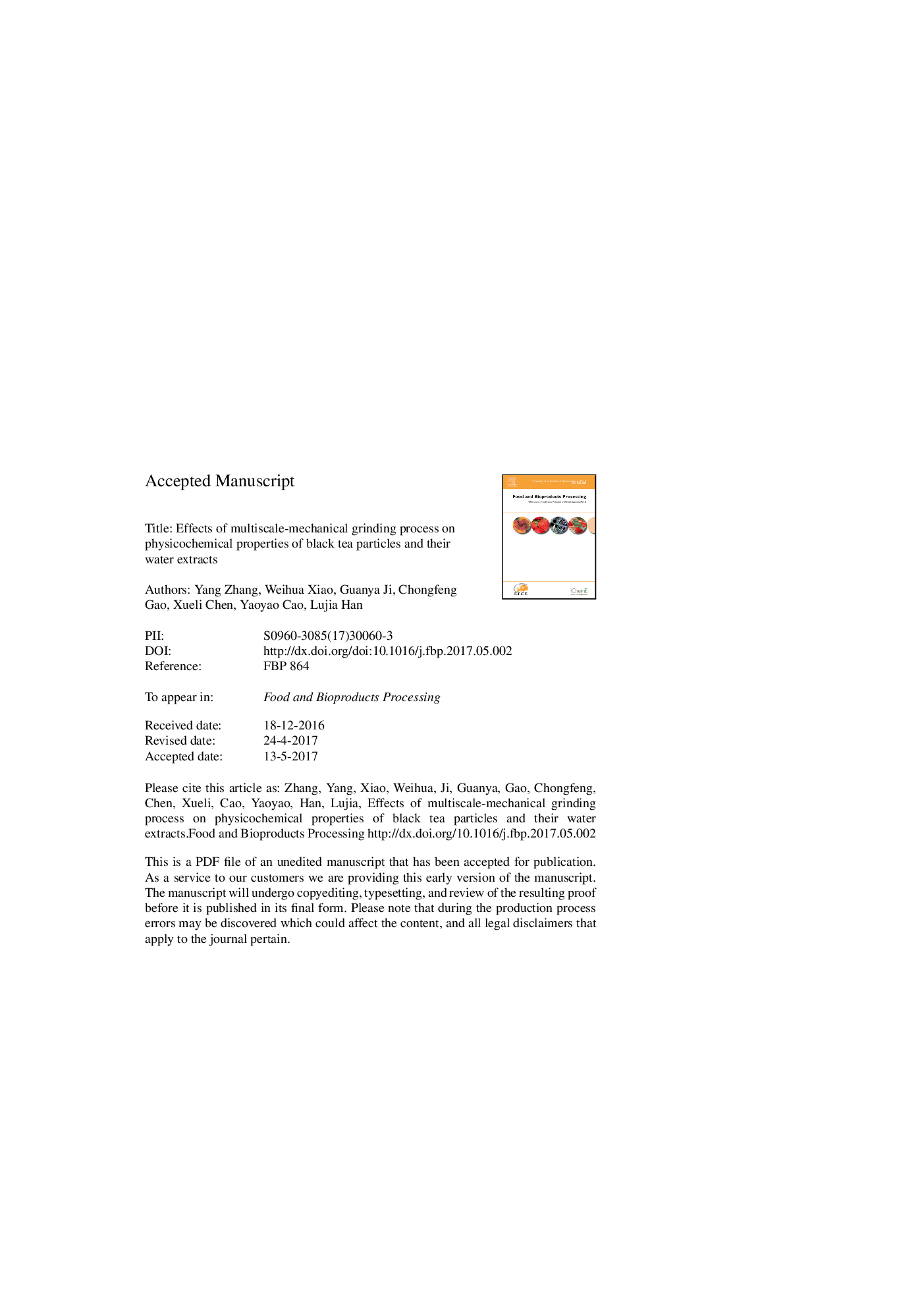| Article ID | Journal | Published Year | Pages | File Type |
|---|---|---|---|---|
| 4753025 | Food and Bioproducts Processing | 2017 | 32 Pages |
Abstract
Mechanical grinding of tea is a crucial step in tea processing which can influence the quality and utilization of tea products. To investigate the effects of different grinding scale on black tea, particles at organ (â¼mm), tissue (500-100 μm), and cell (50-10 μm) scales, were produced to compare their microstructural, compositional, molecular, antioxidant and dynamic extraction properties. The results proved organ and tissue-scale particles had similar properties, whereas cell-scale particles were significantly altered. In detail, for particles, the decrease in particle size resulted in an increase in cell wall breakage ratio, specific surface area, exposure of inner pores and depolymerized cell wall components on particle surfaces. According to the results of dynamic extraction, extraction equilibrium of the components could be obtained within 45 min. For water extracts at extraction equilibrium, microstructural changes at cell scale affected the diffusion process of phytochemicals, leading to more extractable macromolecules (protein and polysaccharide) and homogeneous particles, which enhanced antioxidant activity. However, the infusion yields of cytoplasmic micromolecules (tea polyphenols, caffeine, and free sugars) were not influenced by different grinding process. In conclusion, organ-scale grinding can meet the need for micromolecule-aimed products, while cell-scale grinding is essential for structure, macromolecule and antioxidation-enhanced products.
Keywords
PDIGFCSSABJHDPPH1,1-diphenyl-2-picrylhydrazylBrunauer–Emmett–TellerPhysicochemical propertyParticleMicrostructureFood and Agriculture OrganizationSpecific surface areapolydispersity indexBETX-ray photoelectron spectroscopyXPSWater extractFAOProcessblack teagel filtration chromatographyhigh performance liquid chromatographyHPLC
Related Topics
Physical Sciences and Engineering
Chemical Engineering
Bioengineering
Authors
Yang Zhang, Weihua Xiao, Guanya Ji, Chongfeng Gao, Xueli Chen, Yaoyao Cao, Lujia Han,
